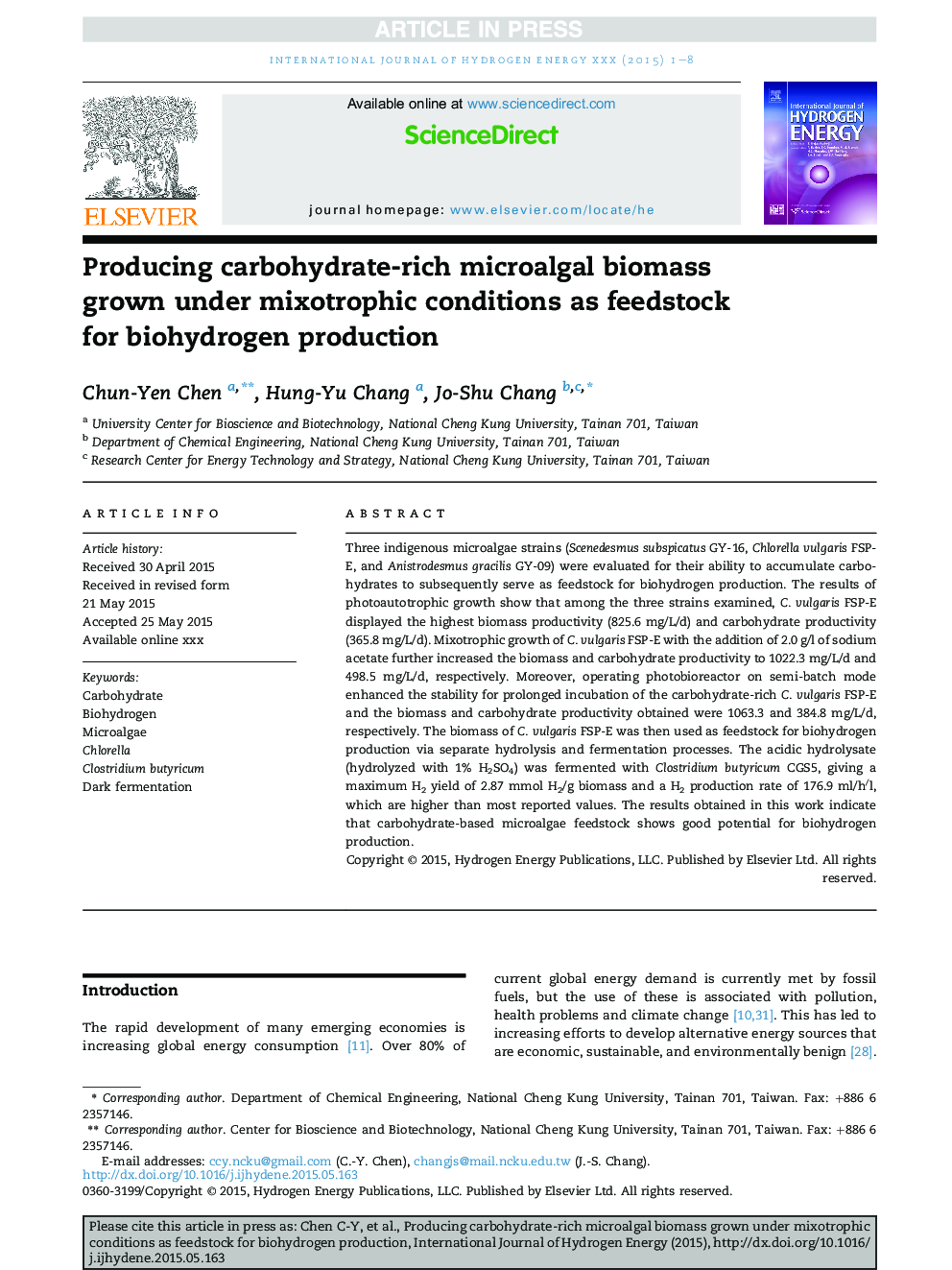| Article ID | Journal | Published Year | Pages | File Type |
|---|---|---|---|---|
| 7711507 | International Journal of Hydrogen Energy | 2016 | 8 Pages |
Abstract
Three indigenous microalgae strains (Scenedesmus subspicatus GY-16, Chlorella vulgaris FSP-E, and Anistrodesmus gracilis GY-09) were evaluated for their ability to accumulate carbohydrates to subsequently serve as feedstock for biohydrogen production. The results of photoautotrophic growth show that among the three strains examined, C. vulgaris FSP-E displayed the highest biomass productivity (825.6 mg/L/d) and carbohydrate productivity (365.8 mg/L/d). Mixotrophic growth of C. vulgaris FSP-E with the addition of 2.0 g/l of sodium acetate further increased the biomass and carbohydrate productivity to 1022.3 mg/L/d and 498.5 mg/L/d, respectively. Moreover, operating photobioreactor on semi-batch mode enhanced the stability for prolonged incubation of the carbohydrate-rich C. vulgaris FSP-E and the biomass and carbohydrate productivity obtained were 1063.3 and 384.8 mg/L/d, respectively. The biomass of C. vulgaris FSP-E was then used as feedstock for biohydrogen production via separate hydrolysis and fermentation processes. The acidic hydrolysate (hydrolyzed with 1% H2SO4) was fermented with Clostridium butyricum CGS5, giving a maximum H2 yield of 2.87 mmol H2/g biomass and a H2 production rate of 176.9 ml/h/l, which are higher than most reported values. The results obtained in this work indicate that carbohydrate-based microalgae feedstock shows good potential for biohydrogen production.
Related Topics
Physical Sciences and Engineering
Chemistry
Electrochemistry
Authors
Chun-Yen Chen, Hung-Yu Chang, Jo-Shu Chang,
